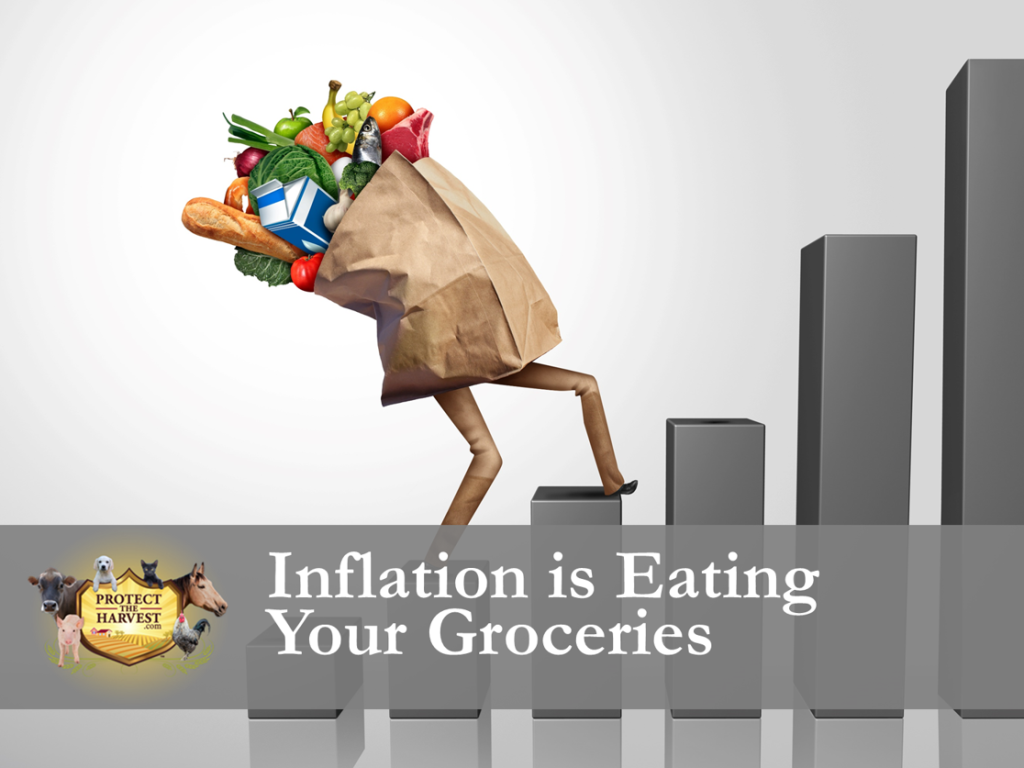
Thomas Sowell once wrote:
“Inflation is a quiet but effective way for the government to transfer resources from the people to itself, without raising taxes…governments have stolen their people’s resources this way, not just for centuries, but for thousands of years.”
The United States is currently suffering from the worst inflation in over 40 years, largely due to policies put in place by the government.
According to the U.S. Labor Department, the overall annual inflation rate for the United States is 9.1% for the 12 months ending in June 2022, which is the largest annual increase since November 1981. The cost of living is sky-high, with drastic increases in the costs of everyday essentials.
The Facts About Groceries
The US Bureau of Labor Statistics shows that overall grocery prices have jumped 12.2% overall, with the costs of some goods shooting higher yet. From May 2021 to May 2022, the price of eggs jumped a startling 32.2%. Add that to the price of milk rising 15.9%, chicken rising 17.4%, meat and fish rising 13.1%, along with fruits and vegetables rising 8.1%. This is a recipe for disaster to those most affected by price increases.
Even while the cost of traditional protein sources are rising substantially, the globalist narrative continues to promote eating insects for protein. Instead of dealing with the underlying issues of inflation, they would rather endorse insects as a figurative band-aid to our food supply.
Policy Impacts Inflation and Food Security
Inflation is caused by several factors. The current state of inflation is due in no small part to the record high fuel prices caused by current policies. The cost of fuel has risen nearly 60% in the past year. High fuel prices impact not only our personal transportation options but also the cost of producing and transporting goods nationwide. This affects consumers in numerous ways; one of the most significant is the current price of groceries.
Adding to the burden on consumers, grocery prices are also affected by problems throughout the supply chain, from wars to natural phenomena such as storms and drought. Some issues in the supply chain, such as staffing and logistics, are the result of overregulation or lingering effects of policies implemented during the pandemic. In addition, the destruction of numerous agricultural and food processing facilities throughout the nation is certainly notable.
The combined result creates a true plight for consumers as they struggle to make ends meet, sometimes having to make difficult choices between gas or groceries. When buying groceries, consumers find themselves spending more money but purchasing fewer products. The increased cost of nutritious staple items is especially concerning since it pushes people toward less healthy but more affordable options.
Sadly, the financial effects of inflation are only the tip of the iceberg as many are facing chronic hunger, nutritional deficiencies, and resulting potential long-term health issues. In 2020, the USDA found that 14 million households (an estimated 38 million people, including 12 million children) suffer from food insecurity. While new studies have yet to be conducted, there is no doubt that inflation has increased these numbers substantially.
How Families Are Impacted by Inflation and Policy
The average spending on food items at discount grocery outlet stores has surged 71%, and it has been reported that nearly half of the food banks in the US are seeing increased demand. Consumers are dealing with the harsh realities in different ways. Some forego buying certain items completely or buy generic or store brands instead. Some skip meals entirely. Others shop elsewhere and/or utilize community resources. The food banks themselves are facing challenges as well, with a shortage of truck drivers to deliver goods to food pantry branches, in addition to record-high fuel prices.
SNAP Programs Are Not Keeping Up
Many of those that are food insecure utilize SNAP (Supplemental Nutrition Assistance Program), commonly known as food stamps. However, even those in the SNAP program are having to cut back on their food purchases due to inflation. According to a 2021 USDA report, even prior to inflation, 88% of SNAP participants reported facing barriers to healthy eating, with 61% citing affordability as the main barrier to achieving a healthy diet.
A study published in the American Journal of Clinical Nutrition found an association between SNAP participation and higher consumption of ultra-processed foods—a situation undoubtedly made worse when wholesome, nutritious foods have seen the greatest increases in price. Undoubtedly, the most vulnerable among us are hit the hardest by inflation.
The Situation is Not Looking Up
While the effects of high grocery prices are heightened in some communities, the situation truly affects almost everyone to some degree when making healthy diet choices is simply too expensive. In the spring of 2022, 64% of Americans were living paycheck-to-paycheck in the struggle to balance the costs of living. A huge portion of that cost is the food we eat and skimping on the quality of food affects our quality of life.
Unfortunately, the USDA has forecasted that food prices will go higher still. Mark Meckler, President of Convention of States Action, said, “The failure of Biden’s Administration to take simple, common-sense steps to bring Americans relief is both cruel and indefensible.”
Stay informed and stay involved in your local communities. It is up to us all to work together and push back against policies that are destroying our supply chains and the American way of life.
Links:
Interactive Map Showing Food Plant Destruction HERE
Learn more about the cost of food and skyrocketing prices HERE
Learn more about inflation related to overregulation and logistics HERE



